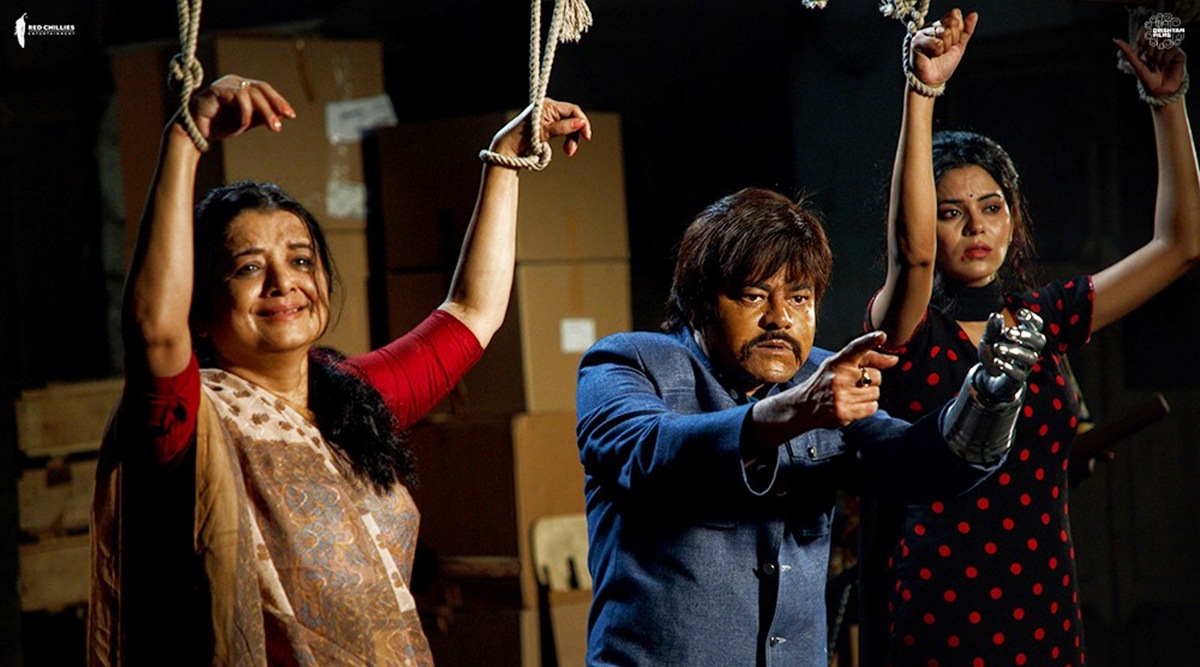By Rachit Raj
Kaamyaab is a delightful film about the unknown, invisible actors who exist namelessly in our memory, even though the films they starred in are defined by the main lead – a star. These actors, often stereotyped by one defining cameo, are like a time capsule. They are stuck (by internal and external forces) in an era of past glory. Holding on to something that is long past them.
Hardik Mehta’s feature film directorial debut is as much about the celebration of a side-actor trying to find a fairytale ending to a long, largely forgotten career as it is about the journey of a man coming to terms with the fact that life is rarely kind to downtrodden artists like him, and it is almost always oblivious to what they bring to the table as veterans of an art form that changes its colour every day.
We first meet Sudheer (Sanjay Mishra) down and out, forced to present his life as a side-kick with the kind of enthusiasm that he has lost with time. He sits on his couch, his shoulders dipping, reciting the one dialogue that has outgrown his career as an actor. His introduction begins with a long montage of his career. He has been everything – a cop, a dacoit, a housekeeper of a haunted villa, doctor. This montage is a quick reminder for the audience of those actors we recognize by face but fail to care enough about to get their names. They exist, only to create a world that an Amitabh Bachchan or a Dharmendra would own.
It is during that interview that we see a shift in Sudheer. He is told by an over-anxious journalist that according to IMDB he has four-hundred-and-ninety-nine films to his credit as an actor. Sudheer takes note of that as if pushed back by memories of an entire lifetime of work. A dream takes birth in his mind right then. A dream further turned into a liveable reality by a friend. A dream of adding one more film to his filmography. Ending his career on a high of five-hundred films. A round figure, immortalized by a film, a role that makes him more than a side-kick of 70’s-80’s films.
This journey is as much about the number five-hundred as it is about Sudheer struggling to find an identity for himself that suits the modern times. He is stuck in a world where he used to be a common face in movies. The world around him (except his realist daughter) forces him to be repeatedly fooled into believing that the identity of his old self continues to be relevant. The TV anchor in the opening scene informs Sudheer that his most famous dialogue – Bas enjoying life, aur option kya hai? – has morphed into a WhatsApp forward over the course of time, wanting him to feel good about how the dialogue has aged. The truth is, in a mutated existence of that dialogue lies the sad ruins of Sudheer’s inability to grow past that one little moment of reckoning.
Sudheer is evidently tired of being asked to repeat that dialogue over-and-over again. He needs a new dialogue. A better iconic moment on-screen and that is what this dream offers him. His old actor friend and now casting director (Deepak Dobriyal) helps him fulfill that dream. He finds that elusive five-hundredth role, but there is more to life and acting than just landing a role.
Kaamyaab takes this plot point as an opportunity to see the flaws and frailties of the human mind and the world as an extension. Early in the film, Sudheer talks about he was a part of the prized group of artists who excelled in giving the right shot immediately. Playing similar roles with familiar dialogues. These actors excelled in the space they owned in a film, and promised a good take almost effortlessly, helping the cause of the film producers.
On the set of his five-hundredth film (a Sanjay Leela Bhansali-esque period drama), Sudheer’s first take is ruined by an external reason. What follows is the complete collapse of an actor who has rarely given multiple takes for a dialogue. He fumbles, and finally falls. The world around him has changed, Sudheer realizes as the metaphorical sun sets behind his defeated shadow. This is not a role that would fall into place in the first take, and he has little experience of acting once it goes past the first few takes. He is a misfit, something he had not even considered until this point.
He is, as Rick Dalton (Leonardo Di Caprio) of Once Upon A Time In… Hollywod would say, a “has-been”. Dalton in that film had no personal life beyond his relationship with his stunt-double. Sudheer has a family. A daughter, brother-in-law and their little girl. But he deprioritizes everyone else in his quest for a career in movies.
In one of the best scenes of the film his daughter blames him for his neglect towards his family. That scene is a moment of great importance for Sudheer. He realizes that his daughter is right in pointing the futility behind the elusive round figure. The question is pointed at us as an audience as much as Sudheer. Would Sachin Tendulkar be a lesser batsman if he ended with ninety-nine international centuries? Is Sanjay Mishra a lesser actor just because he would not be nominated for any awards for one of his best performances in Kaamyaab? The obsession with numbers and certain accolades is a problem that belongs to the world more than Sudheer. It makes it easier to evaluate success and define failure.
But is there a final five-hundredth for Sudheer? Maybe yes. The final role might well be his best (as he desired it to be). It will immortalize him in the eyes of those who truly matter. The rest, who run behind a commercially successful name, were never there for him anyway. Kaamyaab is a mature take on an unsuccessful life. It is a soft reminder of accepting that the past is gone, but that does not make the memories of it any less beautiful. That it is okay if an old Hindi song is copied from an English song of the same tune. What matters is the memory that you have with the song that you heard first.







Leave A Comment
You must be logged in to post a comment.